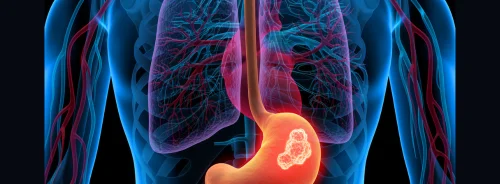FDG PET/CT is a well-established diagnostic tool widely used in oncology to detect and stage various cancers. It combines anatomical information from CT with functional imaging from PET, revealing disease extent better than CT or MRI alone. However, PET/CT has its limitations, such as poor soft tissue contrast and higher radiation exposure. These issues can potentially be addressed by integrating MRI, which provides superior soft tissue contrast and advanced sequences like DWI, enhancing lesion detection and characterisation. A recent article published in AJR examines the diagnostic performance of FDG PET/CT versus FDG PET/MRI through a systematic review and meta-analysis of studies from July 1, 2015, to January 25, 2023.
FDG PET/CT Versus FDG PET/MRI: Methodology and Study Selection
A comprehensive search of MEDLINE, EMBASE, and Cochrane databases yielded 8331 articles, narrowed down to 29 studies after rigorous screening and exclusion of duplicates and non-relevant studies. These studies, including both retrospective and prospective designs, focused on adult cancer patients and compared the diagnostic performance of FDG PET/CT and integrated FDG PET/MRI. Data extraction and quality assessment were conducted using the QUADAS-2 tool, evaluating domains such as patient selection, index test, reference standard, and flow and timing. Statistical analyses employed meta-analysis where data sufficed, with performance endpoints summarised descriptively when meta-analysis was not feasible.
Diagnostic Performance Across Various Cancer Types
The selected studies encompassed a range of cancers, including breast, gastroesophageal, colorectal, gynaecologic, head and neck, hematologic, melanoma, lung, and others. Key performance metrics compared included staging, detection of primary tumours, regional lymph node metastases, distant metastases, local invasion, and recurrence/metastases detection.
1. Staging and Detection of Primary Tumours
- PET/MRI demonstrated significantly higher staging accuracy in breast cancer (98.0% vs. 74.5%) and colorectal cancer (96.2% vs. 69.2%) compared to PET/CT. However, the difference was not significant for gastric, endometrial, hypopharyngeal, Hodgkin lymphoma, and non-small cell lung cancer staging.
- For primary tumour detection, PET/MRI showed superior sensitivity in breast cancer (100% vs. 58.8-64.7%) and cervical cancer (93.2% vs. 66.2%). In contrast, it had similar sensitivity to PET/CT for endometrial and hypopharyngeal cancers.
2. Detection of Regional Lymph Node and Distant Metastases
- PET/MRI had comparable or superior sensitivity and specificity to PET/CT in detecting regional lymph node metastases, with pooled sensitivity and specificity for PET/MRI at 88% and 92%, respectively.
- Detection of distant metastases was qualitatively similar between PET/MRI and PET/CT in most studies. Notably, PET/MRI showed significantly higher sensitivity for liver metastases in colorectal cancer (97.2% vs. 55.6%) and accuracy in breast cancer.
3. Detection of Local Invasion and Recurrence/Metastases
- For local invasion, PET/MRI showed higher accuracy in detecting endometrial cancer myometrial invasion (81.8% vs. 54.1%) in one study, though another found no significant difference.
- In detecting recurrence and/or metastases, PET/MRI generally demonstrated comparable or slightly superior performance to PET/CT in patient-based and lesion-based analyses.
Impact on Patient Management
Several studies reported that PET/MRI influenced clinical decision-making more significantly than PET/CT. For instance, PET/MRI identified parametrial invasion in cervical/endometrial carcinoma, altering treatment plans from surgery to chemoradiotherapy. In colorectal cancer, PET/MRI findings led to changes in treatment strategies in 9% of cases, compared to none for PET/CT. These changes highlight the potential of PET/MRI to impact therapeutic approaches positively.
Challenges and Future Directions
Despite its diagnostic advantages, the widespread adoption of PET/MRI faces challenges such as higher costs, longer examination times, and limited availability. Approximately 30 PET/MRI systems are available in the United States compared to over 1600 PET/CT systems. Streamlined protocols and AI-powered techniques may help reduce examination times and enhance the feasibility of PET/MRI. Additionally, differences in SUV measurements between PET/CT and PET/MRI need addressing, possibly through advanced machine learning-derived attenuation maps.
This systematic review and meta-analysis suggest that FDG PET/MRI has comparable or superior diagnostic performance to FDG PET/CT across various cancer types and diagnostic endpoints. PET/MRI's superior soft tissue contrast and advanced imaging sequences contribute to its enhanced performance. However, cost, availability, and examination duration must be addressed to facilitate broader clinical adoption. Future research should focus on optimising PET/MRI protocols and further exploring its impact on patient management to fully harness its potential in oncologic imaging.
Source: AJR
Image Credit: iStock






